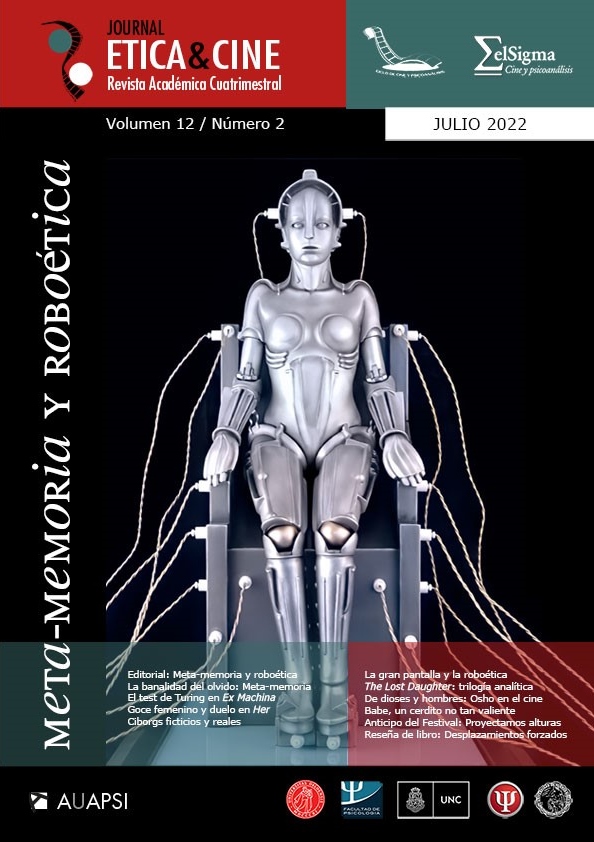Of Gods and Men. The Representation of the Osho Phenomenon in Wild Wild Country (2018)
DOI:
https://doi.org/10.31056/2250.5415.v12.n2.38332Keywords:
Osho, Religion, Series, Analysis, Netflix, RajneeshpuramAbstract
Wild Wild Country is a Netflix miniseries that tries to reconstruct the his-tory of the Indian guru Bhagwan Shree Rajnees (Osho), his assistant Ma Anand Sheela, and his Rajneeshpuram community located in Wasco County in Oregon. The work presents a compilation of archival materials that are interspersed with interviews carried out in the present to some of the main protagonists of all the parties involved: Osho followers, US jus-tice officials, and inhabitants of the town of Antelope. To this plurality of versions is added the distance that the responsible filmmakers put to-wards the work (for example omitting the use of voiceover) in order to achieve a result free from external interference. However, despite these facts, the hypothesis that the article tries to prove is that far from generat-ing an objective analysis that investigates the events from different per-spectives, an audiovisual show is estab-lished that elaborates a critical discourse with the religious phenomenon through various film resources: the editing, the animation, the set-list, and the special effects.
Downloads
References
Aumont, J. y Marie, M. (1988). L’analyse des films. Nathan.
Bagust, P. (2008). Screen natures: Special effects and edutainment in “new” hybrid wildlife documentary. Continuum, 22(2), 213–226.
Baroni, R. (2016). Le cliffhanger un révélateur des fonctions du récit mimétique. Cahiers de Narratologie, 31. https://journals.openedition.org/narratologie/7570
Beltrán Moner, R. (2006). Ambientación musical en radio y televisión: selección, montaje y sonorización. (3ª ed.). IORTVE.
Bruzzi, S. (2000). New Documentary: A Critical Introduction. Routledge.
Carrera Villar, F. (1981). Funciones comunicativo-persuasivas de la música en publicidad. Nueva publicidad (1), 13-32
Costa, C. (2018, 27 de mayo). “No sabíamos nada de los crímenes”: la vida dentro de Wild Wild Country, la polémica secta en Estados Unidos. BBC Brasil. https://www.bbc.com/mundo/noticias-44270766
Darley, A. (2002). Cultura visual digital. Espectáculo y nuevos géneros en los medios de comunicación. Paidós.
Edgerton, G. R. (2008). A brief history of HBO. En G. R. Edgerton y J. P. Jones (Eds.), The Essential HBO Reader (pp. 1-22). The University Press of Kentucky.
Fernández Larrechi, A. (2018, 25 de marzo). ‘Wild Wild Country’: el loco documental de Netflix sobre sectas que no podrás dejar. El Confidencial. https://blogs.elconfidencial.com/television/series/desde-melmac/2018-03-25/wild-wild-country-serie-netflix-sectas_1539427/
Gardies, A. (1993). L’espace texto fílmico. Documento de trabajo. Universidad Beira Interior.http://www.bocc.ubi.pt/pag/tarin-francisco-el-analisis-del-texto-filmico.pdf
Gómez Tarín, F. J. (2011). Enunciación fílmica: algunas notas sobre el punto de vista de los narradores. En F. García García y M. Rajas (Eds.), Narrativas audiovisuales: el relato (pp. 267-290). Icono 14.
Herzog, K. (2018, 27 de marzo). Wild Wild Country: Where are they now? Vulture. https://www.vulture.com/2018/03/wild-wild-country-where-are-they-now.html
Hitchens, C. (2017). Dios no es Bueno: alegato contra la religión. Debolsillo.
Knudsen, S., Kellman, C. y Jones, G. (2013). The business of media SWOT analysis: Netflix. Media Economics and Technology, IMC, 461, 1-29.
Lewis, S. K (2001, noviembre). History of Biowarfare: Bioterror, The Cults. Nova Online Website. https://www.pbs.org/wgbh/nova/bioterror/hist_nf.html#cult
López Serrano, A. (2005). Armas de comunicación masiva. La imagen manipulada como agente histórico. En M. P. Amador Carretero, J. Robledano Arillo y M. del Rosario Ruiz Franco (Eds.), Terceras Jornadas Imagen, Cultura y Tecnología (pp. 267-275). Madrid.
Malick Chua, J. (2018, 16 de abril). The story behind Wild Wild Country’s Red Rajneeshee Outfits. Racked. Recuperado de https://www.racked.com/ 2018/4/16/17235638/wild-wild-country-rajneeshee-red-rajneespuram-maroon-burgundy-orange
McCloud, S. (1994). Understanding Comics. The Invisible Art. Harper Collins.
McCormack, W. (2010). The Rajneesh Chronicles: The True Story of the Cult that Unleashed the First Act of Bioterrorism on U.S. Soil. Tim House Books.
Michel, L. (2018, 29 de marzo). The Wild Wild Country Directors Explain How They Made Their Shocking Cult Documentary. GQ. https://www.gq.com/story/wild-wild-country-directors-interview
Minutaglio, R. (2018, 16 de abril). The Grisly Murder Left Out of Wild Wild Country. Esquire. https://www.esquire.com/entertainment/tv/a19733709/wild-wild-country-rajneesh-friederike-kruse-murder-angela-bretnall/
Moreno Rey, F. (2019). El efecto de la música publicitaria en la notoriedad del mensaje. Un estudio experimental en el ámbito de la identidad sonora (Tesis doctoral). Universidad Complutense de Madrid.
Netflix sued by Osho International Over ‘Wild Wild Country’ (2019, 31 de enero). TMZ. https://www.tmz.com/2019/01/31/netflix-sued-osho-international-wild-wild-country/
Osho (1999). Autobiografía de un místico espiritualmente incorrecto. Editorial Kairós.
Patten, D. (2018, 13 de diciembre). Netflix, Amazon, Hulu & Apple top TV for 1st time; Broadcast & cable decline. Deadline. https://deadline.com/2018/12/streaming-series-surpass-cable-broadcast-first-time-fx-study-1202519711/
Pierson, M. (2002). Special effects: Still in search of wonder. Columbia University Press.
Potenza, A. (2018, 25 de abril). Here’s what Netflix Wild Wild Country doesn’t explain about cult leaders. The Verge. https://www.theverge.com/2018/4/25/17275996/cult-leaders-psychology-bhagwan-shree-rajneesh-netflix-wild-wild-country
Quílez Esteve, L. (2014) Hacia una teoría de la posmemoria. Reflexiones en torno a las representaciones de la memoria generacional. Historiografías, 8, 57-75.
Radigales, J. (2008). La música en el cine. Editorial UOC.
Roe, A. H. (2013). Animated documentary. Palgrave Macmillan.
Silman, A. (2018, 19 de abril). 9 Rajneeshpuram Residents on What Wild Wild Country Got Wrong. The Cut. https://www.thecut.com/2018/04/9-rajneesh-followers-on-what-wild-wild-country-got-wrong.html
Thompson, A. (2018, 28 de agosto). ‘Wild Wild Country’: How 3 Sets of Brothers Scored an Unexpected Netflix Emmy Contender. IndieWire. https://www.indiewire.com/2018/08/wild-wild-country-netflix-emmy-contender-1201997890/
Ward, P. (2005). Documentary: The Margins of Reality,Wallflower.
Wayne, M. L. (2018). Netflix, Amazon, and branded television content in subscription video on-demand portals. Media, Culture & Society, 40 (5), 725-741.
Wild Wild Country – The story behind the Story of Rajneeshpuram. (2018, 31 de marzo). Osho Times. http://www.oshotimes.com/2018/03/wild-wild-country/
Downloads
Published
How to Cite
Issue
Section
License
Copyright (c) 2022 Ética y Cine Journal

This work is licensed under a Creative Commons Attribution-ShareAlike 4.0 International License.
Los autores que publiquen en Ética y Cine Journal aceptan las siguientes condiciones:
Los autores/as conservan los derechos de autor © y permiten la publicación a Ética y Cine Journal, bajo licencia CC BY-SA / Reconocimiento - Reconocimiento-CompartirIgual 4.0 Internacional. La adopción de esta licencia permite copiar, redistribuir, comunicar públicamente la obra, reconociendo los créditos de la misma, y construir sobre el material publicado, debiendo otorgar el crédito apropiado a través de un enlace a la licencia e indicando si se realizaron cambios.

Este obra está bajo una licencia de Creative Commons Reconocimiento-CompartirIgual 4.0 Internacional.




